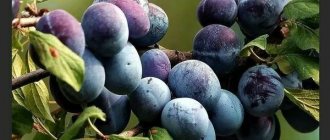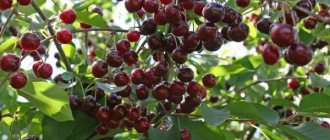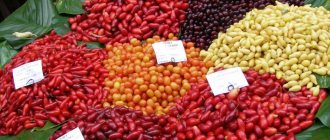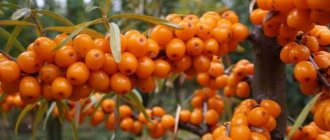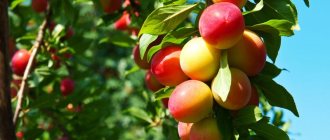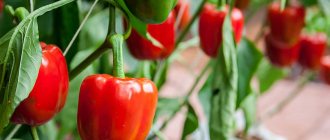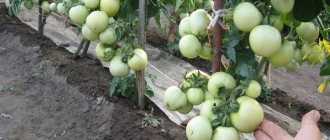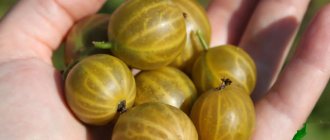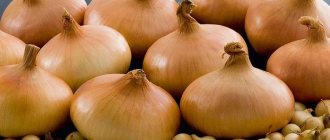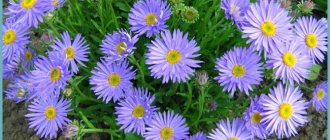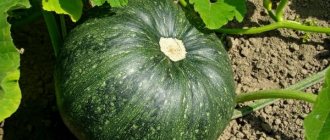Description of the species
Common features of all renklods:
- Tree. They reach a height of 5-7 m. The crowns are rounded and spherical. The branches are initially red-brown, and as they mature, they become gray. The leaves are slightly fleecy, with veins.
- Fruit. Shape – spherical or ovoid. Diameter – up to 4-5 cm. Taste – sweet, dessert. Under the thin skin there is tender, juicy, “marmalade” pulp. There is a thin waxy coating on the skin that can be erased with a light touch. The coating is rough to the touch. Weight – from 10 to 50 g, depending on the variety. There are varieties of different colors - light green, yellow, burgundy, blue, dark purple and other shades.
Extensive family
Renklod Kolkhozny
This drainage is achieved by crossing the green and ternary drains of Renclaude. The resistance of the flowers of this variety allows the wood to be grown in northern regions.
The collective farm variety is also suitable as a pollinator for other plum varieties. One of the advantages is the early fruit, since the tree begins to bear 5 kg of fruit within 3 years from the moment of planting.
The fruits are greenish-yellow, round. Maturity occurs around mid-August.
Description and characteristics of Angelina plum: //6.com////sorta.html.
This variety is a cross of the early and early Red Crosses of Renclaude. Average winter resistance, but will be available soon. It produces an average yield of 8 kg per tree within 3 years of planting.
This is a self-sufficient variety. It needs pollinators. The best of them are the Hungarian Zaritsynskaya (Yugorka) and Renklod Kolkhozny. The Tambov-colored purple fruits are densely colored.
Renklod Michurinsky
The fruit is purple with a red tint, covered with plaque and has a round shape.
This tree is self-sufficient and requires a pollinator to grow. Has average winter resistance.
Harvesting occurs within 4 years after planting the seedlings. The fruits are also very resistant to transportation.
Renklod Karbysheva
This plum variety is grown in Ukraine. He is self-sufficient and matures at an early age.
The creamy fruit is purple and round. It is highly valued for its taste.
It has very sweet flesh, which allows you to eat the fruit in its purest form. This cream is an excellent source of plums.
Interestingly, the plum is not a long-lived tree. The service life is only 15-60 years.
Renclod Altana
The variety has average winter hardiness and drought resistance. This is infertility. When the fruit is planted, it reaches 3-5 years from the date of planting.
The fruits are round in shape and pinkish-red in color. It is also worth noting that it is unstable in relation to monoliosis.
If you have a small garden plot, you should not plant more than one tree, as the tree is productive from the very beginning of the fruiting phase. A 10 year old tree can produce 100 kg (±20 kg) with proper care!
Sustainable and frost-resistant apricot: http://6.com////zimostojkie-i apricots: sliva://6.morozostojkie.html
Renclaude Beauvais
Late ripening period, around September. The variety was obtained by selection from Zeleny.
The fruiting period is 3 years after planting. It has good winter and drought resistance. The fruits of the tree are greenish-yellow and oval-shaped.
They have excellent taste properties and are suitable for use in their original form and for making compotes and jam. An important characteristic of the variety is its self-sufficiency, i.e. no need for pollinators.
Renklod White
The fruit is large enough, juicy and sweet enough to taste. The tree of this variety has a high degree of winter and dry resistance.
The fruits have a matte white color and a white waxy coating. Renclad White is the best option for planting in a summer house.
It is still very early, the fruit ripens in late July - early August, but, unfortunately, the tree is barren.
Advantages and disadvantages
Advantages of Renclod plum:
- Excellent taste characteristics and visual attractiveness of the fruit.
- Good agrotechnical characteristics - frost resistance, immunity, drought resistance.
- High yield.
- High early fruiting - trees bear fruit in the 3-4th year after planting.
- Undemanding to soil composition.
- Resistance to fungal infection.
- Universal purpose of fruits.
- A variety of flavor shades and quality characteristics of fruits - there are varieties that are sweet, sour, juicy, aromatic, with ultra-tender pulp, and others.
Flaws:
- Most varieties are self-fertile - in order for trees to bear fruit, they need additional pollinating varieties.
- Fruiting may be interrupted, but there is no strict frequency.
- Dependence of yield on external conditions - weather, fertilizing, etc.
- Tendency to rot roots at high humidity.
- Vulnerability to drafts.
- Not all varieties have high frost resistance - many freeze out at minus 30 degrees.
- When plums become overripe, they fall off and spoil - it is important to harvest on time.
- If the weather is damp or, on the contrary, there is a drought, the fruits grow small.
- To keep the size of the tree within the specified limits, you have to trim it regularly.
- The branches are fragile - they easily break off due to the weight of the fruit, under the weight of snow, or under the influence of wind.
Description of Chinese plum
Chinese plum growers are tempted by early fruits (2-3 years after planting) and their high yield.
And the incredibly low pest susceptibility and low disease susceptibility add a few more benefits. The Middle Kingdom plum resembles a large shrub or small tree with a branched, spherical crown and reddish-brown, smooth shoots.
A special feature of the Chinese plum is its early (with or before leaves), grandiose and rich flowering, which gives the fruit plant an incredibly charming appearance. Agricultural producers are very excited about growing new varieties of Chinese plum. By crossing the American plum with the Chinese plum, it was possible to develop regionalized varieties for the middle zone.
The next part of this article will be devoted to a description of plum varieties.
Regions of growth
The group of varieties belonging to Renclods is widespread in regions with very different climates. They are found in sunny Greece, Italy, Spain, they also grow in central Russia, and frost-resistant varieties grow in Siberia and the Urals. Although Renclod is heat-loving, our gardeners actively grow it - dozens of varieties of this group are zoned in Russia.
The climate of the south of Russia is most suitable for green crops - varieties of this group are most often found here. Renclod is not recommended to be grown in areas with winter temperatures below minus 25 degrees.
Prevention and treatment of diseases
To prevent diseases, it is necessary to destroy infected fruits, leaves and branches. Some pests can be controlled by sufficient mechanical agitation, scooping and killing of insects (eg using a plum saw).
Only chemicals (bitoxibacillin, lepidocide, etc.) help against aphids and ferns. As a preventative measure, the installation can be treated with an acid solution in spring and autumn.
It should be noted that this procedure only makes sense to the extent that it is possible. Excessive fruit consumption is harmful to the people who consume it:
- increased stomach acidity;
The damage in this case is excessive removal of fluid from the patient’s body. These fruits are also prohibited for infants, since their consumption by children is accompanied by intestinal diseases.
They eat not only fresh fruit, but also in the form of jam and saws, wine, juice or compote, jam, sauces, marshmallows and other sweets.
In this video you can learn more about cutting principles:
What varieties of Renklod are there?
The Renclod group includes dozens of varieties that differ in the appearance of the tree and fruit, and agrotechnical characteristics. Among the renklads there are varieties with different ripening periods.
When choosing Renclod, they take into account not only the taste, color and size of the fruit, but also the ability of the variety to grow and bear fruit in specific climatic conditions. Let's look at several popular Renklods.
Presidential
This late-ripening variety is partially self-pollinating, which means it needs pollinating varieties. Fruit ripening occurs in mid-September. It bears fruit very early - in the third year after planting the seedling. The trees are medium-sized and fast-growing. Height - up to 4 m. Winter hardiness is sufficient for growing in the middle zone. Productivity gradually increases - from 15 to 45 kg of plums from one tree. The varieties that are welcomed as pollinators are Hungarian and Edinburgh plum.
The fruits are round-oval, slightly flattened. Weight – 55-60 g. There is a thick coating of wax. The taste is sweet and sour. The pulp is thick, yellow-carrot color. The stone is oval in shape, easily separated from the pulp. The skin is dense, even rough - the fruits can be transported over long distances without any problems. Plums retain their shape well after canning.
Also among the advantages of “Presidential” are winter hardiness, early fruiting, regular fruiting and good transport tolerance. Disadvantages: susceptibility to many diseases, vulnerability to pests. If the summer is cool and humid, there is a risk that the fruits will not have time to ripen.
Green
This ancient variety is considered the progenitor of all other renclods. This is a recognized standard of French selection. The trees are tall, up to 6-7 m in height. The crown grows up to 6-7 m in width. The trunk bends several times during growth. Final ripening is in August. The variety is self-sterile - it needs pollinators, for example, Altana, Hungarian, Victoria and others. The yield is high - 30-50 kg per tree.
The fruits are not particularly beautiful in appearance, but very sweet and juicy. Weight – 20-35 g. Shape spherical, slightly flattened. The color is greenish-yellow, there are many dots on the thin peel. The pulp is juicy, sweet, and translucent in appearance.
The variety is unpretentious and grows on almost any soil. But it cannot tolerate high humidity - it can develop rot. Immunity is average. Loves space and good lighting. Can be propagated by seeds - the tree retains all varietal characteristics. The variety can also be propagated by shoots and root cuttings.
Many summer residents do not know that on their plots there is an ancient variety called Renklod green - they call it “green plum”.
Tambovsky
The variety was created by crossing the green genus green and the red skorospelka. Trees grow up to 4 m. The crown is spreading. It is best to plant Kolkhoz or Green Greenweed, Red Skorospelka and other varieties nearby. 15-20 kg of fruits are collected from one tree. Ripening - early September. The first harvest is harvested in the 4th year after planting the seedling.
The fruits are not particularly large, weighing about 20 g. The shape is oblong. Color – dark purple. Many subcutaneous points. On the surface there is a thick coating of a bluish tint. The yellow-orange pulp has a sour taste; they contain less sweetness than acid. The main purpose of the fruit is preservation and winemaking.
The variety is frost-resistant - when compared with other spring crops. Tolerates frosts down to -30 °C. However, such frost resistance concerns to a greater extent flower buds, while the shoots freeze out in less frosts. Disadvantage: vulnerability to clasterosporiosis.
Tenkovsky
Another name for the variety is Tatarsky. The tree is short - about 3 m. With a neat, spherical, not too dense crown. The first harvest is at 4-5 years of age. The fruits ripen by mid-September. Recommended pollinators are Sineglazka, Eurasia 21, Skorospelka red, Tatar yellow, as well as damsons.
Round plums are purple in color and have a bluish coating on the skin. Weight – 15-20 g. Fruits are asymmetrical. The pulp, granular and loose, has a yellowish tint. The pulp is not juicy, the taste is sweet and sour.
Tolerance to frost and drought is average. Risk – rust, clasterosporiosis, susceptible to invasions of the slimy sawfly. Spring frosts often kill flower buds.
Karbysheva
The variety was bred by Ukrainian breeders. Ripening – second half of August. The tree is fast growing and needs regular pruning. From the self-sterile group, the best pollinators are Early Renklod, Hungarian Donetskaya.
The fruits on young trees grow large, weighing about 50 g. As the tree ages, the plums become smaller - weighing about 35 g. The shape of the fruit is spherical, the skin is dense, bright scarlet. When plums are overripe, they become slightly purple, with a bluish tinge. The pulp is yellowish-brown, with a dessert taste and pleasant aroma. Taster rating: 4.8 points.
Frost resistance is average, withstands frosts down to minus 20 ° C. In severe frosts, the tree freezes slightly. The disadvantage of this variety is poor transportability.
White
The variety ripens at the end of August. The tree is medium-sized - up to 4.5 m. The variety is early-bearing - the first fruits appear already in the third year after planting. Self-sterile, requires pollination. Suitable: Renklod Zeleny, Altana, Donetsk Hungarian.
The matte white fruits have excellent taste and clear juice. They have an unusual appearance due to their light color. The pulp is tender, colorless. Plums weigh 30-40 g and taste very good.
Frost resistance is high, the variety tolerates long droughts well. Withstands frosts down to minus 30 °C. Fruits of this color produce unpresentable-looking products, so the variety is more often used for fresh consumption.
Yellow
The height of the trees is 5-6 m, they grow very quickly. The crowns are wide, not thickened. Harvesting from an adult tree is 20-30 kg, from a young tree – 10 kg. Peace plum, Tula black plum, and Egg blue plum are used as pollinators. Fruiting occurs in the 4th year after planting.
The fruits are a pleasant yellow color, with a slight green tint. The fruits are almost perfectly spherical in shape, they are only slightly flattened on the sides. The pulp is very juicy, sweet and sour in taste. Tasting score – 4. Weight – 20-30 g. The skin is covered with a thick waxy coating. The variety is the leader among renclods in terms of vitamin C content.
Fruits are transported without problems. Winter hardiness is the maximum for the group of renclods - up to minus 25 ° C. Suitable for growing in the Moscow region and throughout the middle zone.
Blue
Self-fertile variety with average frost resistance. The first fruits appear in the 3rd year. The height of the trees is a little more than 3 m. The crowns are oval, sloppy, of medium density, sparse. Harvest per tree – 30 kg.
Fruit weight is 35-40 g or more. The lemon-colored pulp has a somewhat sour taste. The skin is purple-blue, there is a bluish coating on the surface. The fruits are elliptical, slightly flattened laterally.
Resistance to insects, fungi and viruses is high. Cold resistance – up to minus 30 degrees Celsius. Fruits every year, without interruption. Grown mainly in the south of Russia. Not suitable only for compotes.
De Beauvais
The plants are self-fertile, medium-sized, fast-growing, with a sloppy crown. Increased demands on heat and lighting. Ripens in September. Having ripened, the fruits do not fall off - they remain on the branches for another three weeks. The yield of a 10-year-old tree is 50 kg, of a 15-year-old tree – up to 100 kg.
The yellow-green fruits have a dessert taste. The pulp is sweet, you can feel the nutmeg. The skin, thin and durable, has a dense silvery coating that is easily erased.
The variety is thermophilic, its cultivation area is Crimea, the Caucasus, Krasnodar Territory. To give a good harvest, the variety needs a warm autumn. The fruits tolerate transportation well. The variety is resistant to codling moth. In rainy summers, the fruits burst and rot.
Soviet
The variety was bred in the 80s of the last century. For cultivation in regions with temperate climates. The first harvest is harvested in the 4th year after planting. The height of the plants is more than 3 m. The foliage is moderate, and light easily penetrates the fruits. Ripening - end of August.
Yields increase gradually - from 15 to 40 kg. The fruits weigh about 40 g. The shape is spherical. The color is inky purple, the skin has a bluish-blue waxy coating. The pulp is amber in color, sweet, with a slight sour taste. Tasting score – 4.8 points.
The fruits, having frozen, become loose and acquire a mealy consistency, but the taste does not change. The variety is universal, you can prepare any preparations, except compotes - in them the fruits lose their shape. The main disadvantage of the variety is instability to polystigmosis.
Kolkhozny
The creator of this variety is I. Michurin. The variety was obtained by cross-pollination of Renclad Green with damson plum. Distributed in the middle zone and southern regions of Russia. Height - up to 3 m, with a flattened crown, spherical in shape, not thickened. Plums ripen in mid-August. Productivity grows gradually - from 20 to 40 kg. The best pollinators are Eurasia 21, Skorospelka.
The fruits are collected immediately as they ripen, otherwise they will fall off. The fruits are asymmetrical, yellow-green in color. Under the skin there are grayish dots. Fruit weight is up to 20 g. The pulp is greenish, tender, with a sweet and sour taste. Tasting score – 4. The fruits are universal.
10% of the fruits grow on last year’s shoots, 90% on young branches. It is characterized by high frost resistance - can withstand frosts down to -35 ° C. A frozen tree recovers within two years. The downside is poor resistance to fungal diseases. Sometimes gum leaks.
Early
An early ripening variety bred by Ukrainian breeders in the 50s of the last century. This variety ripens earlier than other renklads. Grows well in the steppe zone. The trees are medium-sized, with rounded crowns. Plant height – 6 m. Ripening – early August. The first plums ripen even earlier. The best pollinators are Early Donetskaya, Renklod Karbysheva.
It is distinguished by large fruits, their weight is 40-50 g. The shape is spherical, the fruits are slightly flattened on the sides. On young trees the fruits grow even larger. Plums are pale yellow in color, the flesh is aromatic and pleasant to the taste. The skin has a slight pubescence and a waxy coating. Tasting score – 4.5 points. The pulp has a pronounced plum aroma.
The variety is resistant to drought and frost. Fruiting is abundant, without interruptions. The fruits become small in dry conditions. Minus - the stone is difficult to separate from the pulp. Transportability is good. For sale, plums are harvested slightly unripe.
Ulena
The variety comes from the south of France. Its origin is not exactly clear. Presumably, this is Renklod the Green, who, having gone wild, adapted to the living conditions. In Russia, you can only find it among breeders or fans of exotic varieties.
Fruiting occurs at the end of August. The shape is spherical, sometimes slightly elongated. The fruits are bright yellow, with a possible pinkish-orange blush on the side facing the sun. Weight – 45 g. Stored without refrigeration for 5 days. Very tasty and aromatic, the flesh is tender and melting.
High resistance to diseases. Withstands moderate frosts. Prefers southern areas with a subtropical climate. Disadvantage: poor separation of seeds from pulp.
Leah
The variety is quite old, with small fruits, cultivated since the beginning of the 20th century. Ripening is at the end of August or beginning of September. The first harvest is in the 3rd year after planting. Peak productivity is from 10 years. The average yield is 15 kg per tree. Pollinators – Renklod Lenya, Skorospelka.
Plum weight – 12 g. Color – golden yellow, with many dots on the skin. The pulp is loose, yellow, sweet and sour. The fruits are stored for a long time under favorable conditions - up to 25 days. The fruits ripen en masse.
High resistance to various diseases. The variety affects black cancer and gum growth. Cons: difficult to remove seeds, low winter hardiness. At very low temperatures, the tree can suffer serious frostbite. A tree lives for 25 years.
Characteristics of the variety
The distinctive features of the Renklod variety are the basis for organizing plant care.
Drought resistance, frost resistance
The variety is resistant to hot climates and temperature changes. With additional insulation it can winter in the northern regions of Russia.
Pollinators of the Renclod plum
The flowering period of the Renklod variety is different for each subspecies. The average flowering period is May-June. Some varieties do not require additional pollination for a bountiful harvest. Self-fertile varieties include:
- Altana;
- Renclaude de Beauvais;
- Enikeeva, others.
Many subspecies require pollination to increase fruit production. Renklod Kolkhozny prefers Red Skorospelka, Renklod Ternovy, and Hungarian Pulkovskaya nearby. The Sovetsky subspecies is well pollinated by similar Renclods. To improve fruiting, Mirabel Nancy, Victoria, Renclod Zeleny, and Hungarian Home are placed next to the Altana variety.
Productivity, fruiting
Renclod is popular among gardeners for its annual bountiful harvests. The number of plums collected from a tree increases depending on the age of the plant. Renklod fruits are sweet, sometimes there is sourness. The size depends on the subspecies and proper care. Fruiting occurs in the second half of summer. Late varieties produce a harvest in early autumn.
Area of application of berries
The dessert fruits of the variety are perfect for making preserves, jams, and compotes. Fresh plums are a wonderful summer dessert.
Resistance to diseases and pests
Trees of the Renklod variety are highly resistant to insect pests and diseases. Regular preventive measures minimize the risk of such phenomena.
Advantages and disadvantages of the variety
The Renklod variety has undeniable advantages over other garden crops:
- Abundant annual harvest.
- Easy to care for.
- Delicious large fruits.
- Disease resistance.
- Ability to tolerate low temperatures and drought.
Plum does not like drafts or winds. The site must be well protected.
How to grow Renclod plums?
It is recommended to plant Renklod seedlings in the spring, before the buds open. Site requirements:
- loose and fertile soil with a neutral reaction;
- good sun exposure;
- location on a hill;
- low groundwater table;
- protection from gusty winds and drafts;
- there should be no cherry plum, sloe or Chinese plum nearby.
Landing algorithms
The planting hole for spring planting is prepared in the fall. The depth of the hole is 60 cm, width is 80 cm. The fertile soil is placed to the side. Then a soil mixture is prepared from the fertile layer and fertilizers.
Composition of soil mixture for one tree:
- fertile soil;
- humus - 2 buckets;
- superphosphate – 50 g;
- potassium sulphide – 30 g.
The soil mixture is poured into a pit and covered with waterproof material. If the hole has not been prepared in the fall, this is a minus, but not critical - this work can be done in the spring, a couple of weeks before planting. When preparing holes in the spring, the soil is not as nutritious.
Step-by-step instructions for planting seedlings:
- Place 2 pegs in the hole for support.
- Lower the tree into the hole so that its root collar is 6-7 cm above ground level.
- When covering the roots of the seedling with soil, shake it from time to time so that there are no voids between the roots.
- The earth is trampled down, and a depression is made near the trunk with a small earthen ridge that prevents water from escaping.
- Tie the seedling to the stakes with soft material so as not to damage the trunk of the seedling.
- Water generously. The norm is 30-40 l.
Watering and fertilizing
Renclod does not react well to excessive moisture - moderation is needed. During the season, the tree is watered 5-6 times. Use settled warm water. The rate of watering depends on the age of the tree - from 3-4 to 8-10 buckets. After watering, the soil is loosened, and root shoots are removed several times during the summer.
They begin to feed the tree only in the 3rd year. How to feed:
- Before flowering, add a mixture of ammonium nitrate - 25 g, potassium salt - 40 g, mineral fertilizers - 300 g.
- During the flowering period, pour a solution of urea - 20 g per 10 liters of water.
- After flowering, add diluted mullein and superphosphate - 50 g.
- After the plums ripen, the tree is watered with urea (4 tbsp) and nitrophoska (6 tbsp) - they are dissolved in water (20 l).
- In June - urea 1%.
- In the fall, when digging, add manure - 15 kg, superphosphate - 150 g, ammonium nitrate - 50 g. Superphosphate - 160 g, and potassium sulfur - 110 g, dissolved in 20 liters of water, are also added to the soil.
Crown formation and sanitary pruning
It is best to prune spring plants in the spring, before the leaves appear. Carry out sanitary pruning. Renklodam is also recommended for summer - in early June. During this period, young shoots are pinched, thickening the crown.
Pruning the Renclod plum, taking into account age:
- Year one. Formation of a spherical crown. 10 skeletal branches are identified. There should be approximately equal spaces between them, and the angle of departure from the trunk should be 45 degrees.
- Year two. Trimming growths up to 25 cm.
- Year three. Shortening shoots growing from skeletal branches and the main conductor - to a length of 30 cm. The remaining growth is cut to 15 cm.
- Year four. By this time, the crown has already been formed. All that remains is to perform sanitary pruning and monitor the crown - to prevent its thickening.
Pruning is carried out with a sharply sharpened and disinfected tool - pruning shears, garden saw, knife. All cuts are treated - garden pitch or slaked lime will do.
Wintering a tree
Young seedlings need insulation; they are covered with spruce branches, hay or paper material on the eve of winter. Mature trees are treated with whitewash. It is also recommended to pour a layer of humus or sawdust into the tree trunk circle. The minimum layer thickness is 10 mm. To protect against rodents, the tree trunk is wrapped in a metal mesh with small cells.
In regions with harsh winters, Renklod must be covered. The tree's branches are tied together and then wrapped in breathable fabric. The barrel is wrapped in breathable material, and only then in metal mesh.
Features of care
Renclod plum needs additional pollination
The main feature of caring for Renclod plums is the need for additional pollination . This procedure can be carried out artificially using special pollen, but many gardeners prefer to plant pollinating trees nearby.
Tree branches may begin to bend to the ground under the weight of the crop, so it is necessary to build supports. Moreover, those places where the tree and the support come into contact with each other are softened with foam rubber or soft fabric.
Pruning plum
It is performed strictly at the very beginning of spring, after the leaves bloom or in early June. Such periods are the safest.
Renklod plum pruning scheme
- First year . In order for the crown of the tree to have a regular, spherical shape, you need to select 10 skeletal branches, with equal intervals and an angle of departure from the trunk, which should be equal to 45 degrees.
- Second year . All formed growths are trimmed, leaving a length of only 25 centimeters.
- Third year . It is necessary to shorten the shoots that grew from the skeletal branches and the conductor, their length should be 30 centimeters, the remaining growths are cut to a mark of 15 centimeters.
- Fourth year . Starting from the fourth year, the crown of the tree is considered formed. Therefore, now you only need to carry out sanitary pruning, in which all dry and diseased branches are removed. You also need to ensure that new shoots do not thicken the crown and allow air and sunlight through.
All cut areas must be lubricated with a thin layer of garden varnish.
Top dressing
Typically, a tree begins to be fed from the 3rd year of planting , before which it receives nutrients from fertilizers applied during planting.
- In April, before flowering begins, the following composition is poured under the tree:
- 25 grams of ammonium nitrate;
- 40 grams of potassium salt;
- 300 grams of mineral fertilizers;
- Then the plum is watered generously.
- During the flowering period, the tree is watered with a urea solution:
- 5 liters of water;
- 10 grams of urea.
- Then after flowering you need to add:
- 0.3% mullein solution;
- 50 grams of superphosphate.
To get a good harvest, plums should be fed regularly.
- During the period of fruit ripening, plum trees may require additional strength, which can be provided by the following feeding:
- 4 tablespoons of urea;
- 6 tablespoons of nitrophoska;
- 20 liters of water.
- In the summer, from approximately June 1 to June 5, the tree is sprayed with a 1% urea solution.
- In the fall, the following is added to the digging:
- 15 kg of manure or compost;
- 150 grams of superphosphate;
- 50 grams of ammonium nitrate.
- also be watered with the following mixture:
- 4 tablespoons of potassium sulfur;
- 6 tablespoons of superphosphate;
- 20 liters of water.
The plum should be watered using holes 35-40 centimeters deep , this is the level at which the root system is located. It is best to use warm, settled water. Experienced gardeners recommend watering the tree 5-6 times per season. The amount of water used for irrigation is determined by the age of the tree; on average, it is 4-8 buckets.
The tree trunk of the Renklod plum must be kept clean, removing all grown plants and root shoots. Also, the soil in this area needs to be loosened.
Preparing for winter
For the most part, all Renklods are afraid of cold weather, so they need to be prepared for the winter period:
- Young trees are covered with spruce branches, hay or sedge, and can also be tied with paper.
- Mature trees do not require such protection; it is enough to simply whiten the trunk and sprinkle it with humus or sawdust; their layer should be at least 10 centimeters.
Before whitewashing, the tree bark must be cleaned.
Disease and pest control
Renklod is often affected by fungal infections. To protect trees from infection, they are regularly treated with copper-containing preparations:
- HOM;
- Bordeaux mixture;
- copper sulfate.
Plums are processed three times per season:
- early spring;
- during the formation of buds;
- after flowering.
With severe damage, the number of sprays increases. Prevention will help reduce the risk of infection:
- autumn digging of soil in the tree trunk circle;
- dispose of fallen leaves in a timely manner;
- install trapping belts for insects;
- The crown is regularly thinned.
Common diseases of Renclod plum and control measures:
| Pest | What's the harm? | What to do? |
| Plum moth | Caterpillars gnaw holes in green shoots and eat the pulp of plums. | After flowering, spray with a saturated salt solution - 0.5 kg is dissolved in 10 liters. After harvesting, the tree is sprayed with 10% benzophosphate. |
| Plum (reed) aphid | They suck juices from leaves and young shoots. | They cut off shoots that have a lot of aphids on them and destroy them. Spray with a soap solution - add 60 g of laundry soap to 10 liters of water. Treated with chemical insecticides - before flowering and after flowering. |
| Plum moth | Entangles fruits and leaves with cobwebs. They dry out, deteriorate and crumble. | Spray with Chlorophos. |
| Plum sawfly | The larvae, hatching from the eggs, eat away the pulp of the ovaries. Plums infected with larvae fall before they ripen. | Spray with insecticides before and after flowering - Metafos 10%, Karbofos, Fufanon, Mospilan. |
Find more information about plum diseases and their treatment here.
Common diseases of Renclod plum and control measures:
| Diseases | Symptoms | How to treat? |
| Moniliosis | A fungal disease that causes fruit rot. accompanied by wilting of inflorescences. There are brown spots on the leaves, the fruits are covered with white rot. | The tree is sprayed with Horus 3%, and the soil in the tree trunk is also treated with it. |
| Gum treatment | The bark becomes thin, and an amber-colored sticky liquid flows out of it. | Remove the leaking gum, clean the affected area with a knife, and then treat it with garden varnish. |
Agrotechnics of cultivation
Landing
The process of planting a plum of this variety is similar to that of planting any other fruit tree.
Features of planting this variety
But there are two special points:
- The seedling must not be buried. Strong deepening contributes to warming of the bark and oppression of the tree. As a result, slow growth and poor fruiting.
- Within two years after planting, the young tree is fixed with pegs. The Renclod Altana plum is a vigorous variety, so a strong wind can break a fragile trunk.
What season should I choose to plant a tree?
Planting can be done both in spring and autumn.
For autumn planting, this is mid-September, before the first frost occurs. In spring - April, before the buds begin to bloom.
Soil and place
In what soils can plums be grown? On any, but it is important to comply with two basic requirements: looseness and fertility of the soil, as well as weak or neutral acidity.
Plum grows well in sunny, well-lit places. Shade or partial shade provokes a decrease in yield and also impairs the quality of the fruit.
The described plum variety is quite moisture-loving and does not like drought. But excess moisture is also undesirable for a tree, as it provokes the development of various diseases that can cause the death of the tree.
Plum blossoms occur quite early, so there is always a fear that spring frosts will damage the delicate flowers. This is why it is not recommended to plant plum trees in lowlands. Plains or small hills are better suited for this.
Saplings
It is necessary to buy Renclod Altana plum seedlings strictly in nurseries or specialized retail outlets.
To choose the right seedling, you need to be aware of some nuances
First. Tree age
Try to choose annual trees for planting. A one-year-old seedling has an average height of 1.2 meters, a two-year-old one - 1.5 meters.
Caring for colored hair at home
Second. Bark and root
When choosing, you need to pay close attention to the bark. It should be uniformly colored, smooth to the touch, without holes or bulges.
The tree must have a well-developed root, the length of the main roots is at least 12 cm. There must be a developed fibrous root system.
You cannot buy a tree with a lump of earth, because... sellers may hide damaged root systems.
Third. Proper storage
It is better to store the seedling before planting in a dark room, while the roots can be wrapped in burlap or sprinkled with earth.
Arrangement of the pit
The fruit tree is planted in a planting hole, which must be prepared in advance. Preparations are carried out in the autumn.
To do this, dig a hole 70–80 cm wide to a depth of 70 cm.
The excavated soil is used to prepare a nutrient mixture. To do this, add to the ground:
- rotted compost in the amount of 2 buckets,
- 40–50 g superphosphate,
- as well as 20–30 g of potassium sulphide.
The resulting mixture is returned to the pit and sprinkled with clean earth on top.
But if it so happened that in the fall it was not possible to prepare the hole. This can be done in the spring, about 2 weeks before planting. Preparation consists of mixing 2 parts soil with 1 part compost.
After planting and watering, the hole is mulched with dry soil, peat or pine needles.
Trees are planted at a distance of approximately 3 m from each other.
At first, it is important not to let the soil dry out!
Pollination
The Renclod Altana plum is a self-sterile variety. Therefore, cross-pollination will help increase the ovary.
You can use an artificial fertilization method, or you can plant a plum of the specified variety next to pollinating plum varieties (see photo):
- Renklod green,
- Hungarian homemade
- Renklod Ulena.
Peculiarities of Renklod breeding
You can propagate the Renklod plum in any of the following ways:
- Seeds. Typically this option is used for growing rootstocks. Large and healthy fruits are selected. The seeds are washed and removed, which are soaked in water for 4 days. The water is changed regularly and the seeds are stirred. Then they are taken out, dried and placed in a glass jar. When the time comes for planting, the seeds are mixed with moistened sand/sawdust and left for 180 days. Temperature – from +1 to +10 degrees. Having grown the seedlings, the seedlings are transplanted into open ground.
- Vaccination. The procedure is carried out during the active growing season. Suitable time is April-May or July-August. The grafting is carried out behind the bark or into a split.
- Root shoots. In the fall, the root connecting the mother plant to the shoot is cut. In the spring, the shoots are removed along with the roots to be transplanted to a permanent place.
- Root cuttings. Propagation scheme by cuttings: Dig up the roots of a young tree, 1 m from the trunk; for mature trees - 1.5 m.
- The length of the dug roots is 15 cm, width is 1.5 cm.
- Cuttings dug in the fall will be stored until spring in trenches - their depth is 50 cm. They are covered with peat and sand on top. Or they store the cuttings in the basement, under a layer of sawdust.
- In April, the soil is prepared by mixing peat with sand (1:3).
- The cuttings are planted in the prepared soil at an angle. Cover the top with film.
- The tops of the cuttings are buried 2 cm and sprinkled with peat or sawdust.
- Until shoots appear, the cuttings are protected from the sun and moisturized.
- If several shoots appear at once, then choose the one that is stronger.
- During the season, the plant is fed with nitrogen fertilizers 3-4 times.
- For the winter, the shoots are taken to a warm room, growing to 1-1.5 m, by spring the trees will be ready - you can plant them in a permanent place.
Planting and care
How to plant a tree correctly and how should it be cared for?
When and where to plant?
The best time to plant plums is in the spring, before the buds open. It is not worth planting in the fall, even if the seedlings have already been purchased, it is better to dig them in and plant them in March-April.
Finding a suitable place for plums is very important - because their taste will depend on it. If the tree is in the shade or in the wind, you won’t get any sweet fruit from it. The warmer and lighter the plum is, the sweeter the harvest will be.
It is good to plant the springclod in a bright place , so that it is covered from the north and west by some building or fence. If there is nothing to shelter from the wind, you can build a temporary greenhouse.
When planting several plants, you need to leave at least 3 meters between them so that the roots have room to grow and the crowns do not block each other’s light.
Acidic soil is not suitable for this plum - it loves neutral, moisture-intensive and loose loams. In this case, groundwater should lie no closer than 2 m. The hole for the seedling needs to be half a meter deep. Place a peg next to the tree and tie a plum to it on the north side. There is no need to fertilize the soil during planting - sprinkle the roots with clean soil.
Soviet Renklod is a variety of domestic plum, and it is not crossed with “outsiders” - cherry plum, sloe, Chinese plum. For pollination, she needs either her brother - greenberry, or another variety of domestic plum.
How to care?
Caring for Soviet Renklod includes watering, fertilizing, crown formation, pinching young shoots and thinning fruits. There is no need to cover trees for the winter.
Watering. Plum needs moisture more than other stone fruits, since its roots are located shallowly - 20-40 cm. If the tree does not have enough water, it grows poorly and produces few fruits.
You need to water the plum (if the weather is dry) evenly, from the time the buds open and before the fruits begin to ripen. Greenweed especially needs moisture during shoot growth and ovary formation. If you do not water the plum during this period, the ovaries may crumble.
Before watering the tree, be sure to loosen the soil so that there is no crust blocking water and air access to the roots.
Feeding. The Renklod Soviet variety loves feeding. In winter, organic fertilizers are good for it, and in spring and summer, when the plum is actively growing, you need to add nitrogen fertilizers to the soil. The best composition of complex fertilizer for plums is as follows: nitrogen, potassium, phosphorus plus microelements - iron, magnesium, zinc, calcium, copper, manganese, sulfur, boron, zinc.
Trimming. The branches need to be trimmed to make it easier for the tree to support the weight of the fruit. The tree should be formed in the first year of its life. It is best to do this in the spring, when there are no night frosts and the foliage has not yet blossomed.
The branches should be trimmed with a sharp knife, and the cuts should be lubricated with garden varnish. There should be 7-10 skeletal branches; the seedlings have them shortened. If the trunk (part of the trunk from the root collar to the first tier of the crown) has branches protruding at an acute angle, they must be removed.
When the tree begins to bear fruit, pruning is done to a minimum - the crown is thinned out, cutting off weak, broken, haphazardly growing branches.
In the summer, young shoots on the plum tree are pinched so that the crown does not thicken.
Thinning. Renklod bears fruit according to the principle: one year it is dense, the next it is empty. To avoid this and preserve the tree’s strength and nutrients for the next season, you need to thin out the green plums before they begin to fill up, so that the fruits do not touch each other.
If the harvest, despite this, is very rich, and the branches are heavy, you need to put supports, the ends of which should be wrapped in a cloth so as not to injure the branches.
Around the plum trunk, 3 meters from it, all weeds should be removed along with the roots. Do the same with the young shoots that have made their way under the mother tree - otherwise they will draw nutrition from the roots of the adult plum, which will affect the quantity and taste of the fruit.
Reviews from experienced gardeners
★★★★★
Gennady T., Taganrog. I grow Renklod Early on the plot.
This plum is large-fruited and tasty, but there are few fruits. Very beautiful - excellent presentation. But, if you take plums somewhere to sell, then they must be collected unripe. I recently planted Altana, have already harvested two crops - the fruits are stunningly beautiful, and are a success in the market. But still, my favorite plums are Hungarian plums, they are easier to sell, they are easy to use, transportable, and twice as sweet as renclods. ★★★★★
Leonid R., Belgorod region. I grow many varieties of plums - they take up little space, require minimal care, and the yield is 30 or more kg per tree.
One of my favorite varieties is Renklod Sovetsky. Its fruits have a special taste - sweet, with a taste of honey. The downside is late ripening and the need for pollinators. Hide
Add your review
The Renklod plum grows and bears fruit without problems in areas with mild winters, but, thanks to frost-resistant varieties, plums with “marmalade” pulp can also be grown in the central regions.
0
0
Copy link
Choosing a landing site
Any Renclod plum variety is a very light-loving plant. It is necessary to choose an area that will be well lit and at the same time protected from cold air currents. In cases where trees are grown along a garden fence, it is necessary to plant them on the sunny side. The distance between plants should be at least three meters. Other garden trees should not shade the plum, so it is planted on the south side.
The Renklod plum grows on any land. However, there are still some conditions - you need to plant it on drained and airtight soils that have a light mechanical composition. The tree also grows well on chestnut and chernozem soils.
The tree is planted in early autumn or spring. At this time, the plant is said to “fall asleep.” After planting the seedlings, it is necessary to water them abundantly. You should not replant plants that are more than five years old. They do not tolerate this process very well and may continue to get sick in the future.
Harvesting
The variety is highly productive and begins to bear fruit in 4–5 years. From an eight-year-old tree you can collect 35–40 kg of fruit; plums over 15 years old bring up to 90 kg.
The fruits begin to ripen in the second half of August. Ripening is not simultaneous and continues until early September. Plums are collected by hand into wooden or plastic containers.
The fruits ripen August 15–25
Ripe fruits are stored at a temperature of +4...+6 degrees for 14 days in closed plastic containers or paper bags.
For longer storage of fresh fruits, they are removed slightly unripe. These plums are stored at room temperature for 4–6 days, then they can be stored in a cool place.
Frozen plums can be stored for 6–12 months. Only fully ripened plums are suitable for freezing.
The Renclod Altana plum variety tolerates transportation well over long distances.
Plums can be prepared in the form of dried fruits. They are dried naturally in the shade or using drying chambers. Store drying material in fabric bags or paper boxes in places with good aeration.
Plums are consumed fresh as a dessert, and are also used for preparing seasonal preserves. The fruits are used to prepare compotes, candied fruits, jam, confiture, sauces for desserts and meat dishes. You can also make homemade wine or liqueur from plums.
Plum fruits of the Renclod Altana variety are good for making compotes, juices and marinades
Diseases and pests of plum variety Renclod Altana
The plum variety Renclod Altana cannot resist diseases such as moniliosis, but is resistant to diseases such as:
- Polystigmosis;
- Claseroproriosis;
- Sharka.
- Aphids (not as severely affecting the crop as the others).
Disinfection is necessary before the buds open; medications such as:
- Confidor maxi;
- Aktara;
- Decis pro.
Young shrubs need insulation in the cold season.
Tree planting
Young seedlings are planted in mid-spring. The soil must be fertile, loose, and well permeable to moisture. When planted in clay soil, the root system of plants may rot. You should not plant plum trees in areas where rainwater accumulates or where groundwater is high.
Trees need plenty of sunlight. You should also take care of protection from drafts and cold winds, so the best place for planting seedlings will be an area a short distance from a fence or building.
Before planting in autumn, prepare a planting hole in which support pegs are placed
The plant is placed in a hole, taking into account that the root collar should be several centimeters above the soil level.
During planting, the hole is filled with soil, then a hole is dug around it. The plant is watered abundantly. The soil around the trunk is mulched with sawdust or leaves.
Agricultural technology
The variety develops well on fertile loams and chernozems, which predominate in the growing region. Plum planting can be done in autumn or spring, but within the specified time limits. After spring planting, the seedling requires more careful care, especially with regard to watering. In the fall, it is important to have time to plant the plant 2 - 3 weeks before the onset of a steady cold snap.
Adult specimens do not tolerate excessive moisture, so the soil must be loosened after watering or rain. Watering itself should be uniform, taking into account precipitation. In the spring, nitrogen-containing fertilizers will help accelerate the growth of plums; in the fall, mineral fertilizers are preferable. All growing growth should be removed. In order for the tree to bear fruit annually, pruning must be carried out in the spring, before the sap begins to flow. If the branches cannot support the weight of the crop, they must be supported.
Soviet renklod is perfect not only for private estates; this variety is actively grown in industrial gardens. Good winter hardiness, high consumer qualities of the fruit, excellent yield and good immunity - all this helps the plum to maintain its leading position for decades. The disadvantages can be called relative. Polystigmosis can be dealt with through preventive measures, and the boiled pulp is perfect for making jam.
Homemade plum
This type of plum was developed by combining several varieties. Most often it is distributed in northern latitudes with a temperate climate.
The tree grows to approximately 15 meters. The crown is spreading, sometimes with raised smooth shoots with thorns. The home plum lives for about 25 years. It begins to bear fruit already in the 2nd or 3rd year after planting on the site.
Depending on the variety, the tree bears fruits of different sizes. These can be small fruits up to 50 grams, and real giants - about 100 grams in weight.
The shape of the berries is round and elongated. Color most often:
- yellow;
- pink;
- red;
- violet;
- dark purple.
All of them are covered with a waxy coating.
Home plum cultivation began during the reign of the Egyptian pharaohs. Later it migrated to Greece, later to France, and then came to Russia. Today there are many varieties of domestic plums known. They can be divided into several subgroups:
- Natural hybrids. This subgroup includes varieties bred in Europe before the beginning of the 21st century. The fruits of such varieties are often ovoid in shape, often medium or large in size. The color of the peel is yellow, pink, purple. The pulp of the berry is amber in color. When plums are fully ripe, they have a sweet and delicate taste.
- Italian plum. Trees of this subgroup are usually medium in size, the crown is round and neat. The fruits are yellow with a greenish tint. The pulp is light green, elastic. Sometimes there are specimens with purple fruits.
- Mirabel. This subspecies appeared as a result of crossing a common plum with a cherry plum. The result was a small, round fruit with yellow flesh. Mirabelle is grown throughout Europe. Its berries are used to make delicious yellow jams, as well as a strong plum drink - “Brandy”.
- Damson plum. Climatic endurance is characteristic of damson trees. They easily tolerate excess moisture, as well as temperature changes.
Damsons usually have a wide crown and a vertical trunk. Small dark purple fruits grow on spreading shoots. They have a tart or sweet and sour taste. Despite this, they are widely used in cooking. The only drawback is that the flesh does not separate from the seed.
